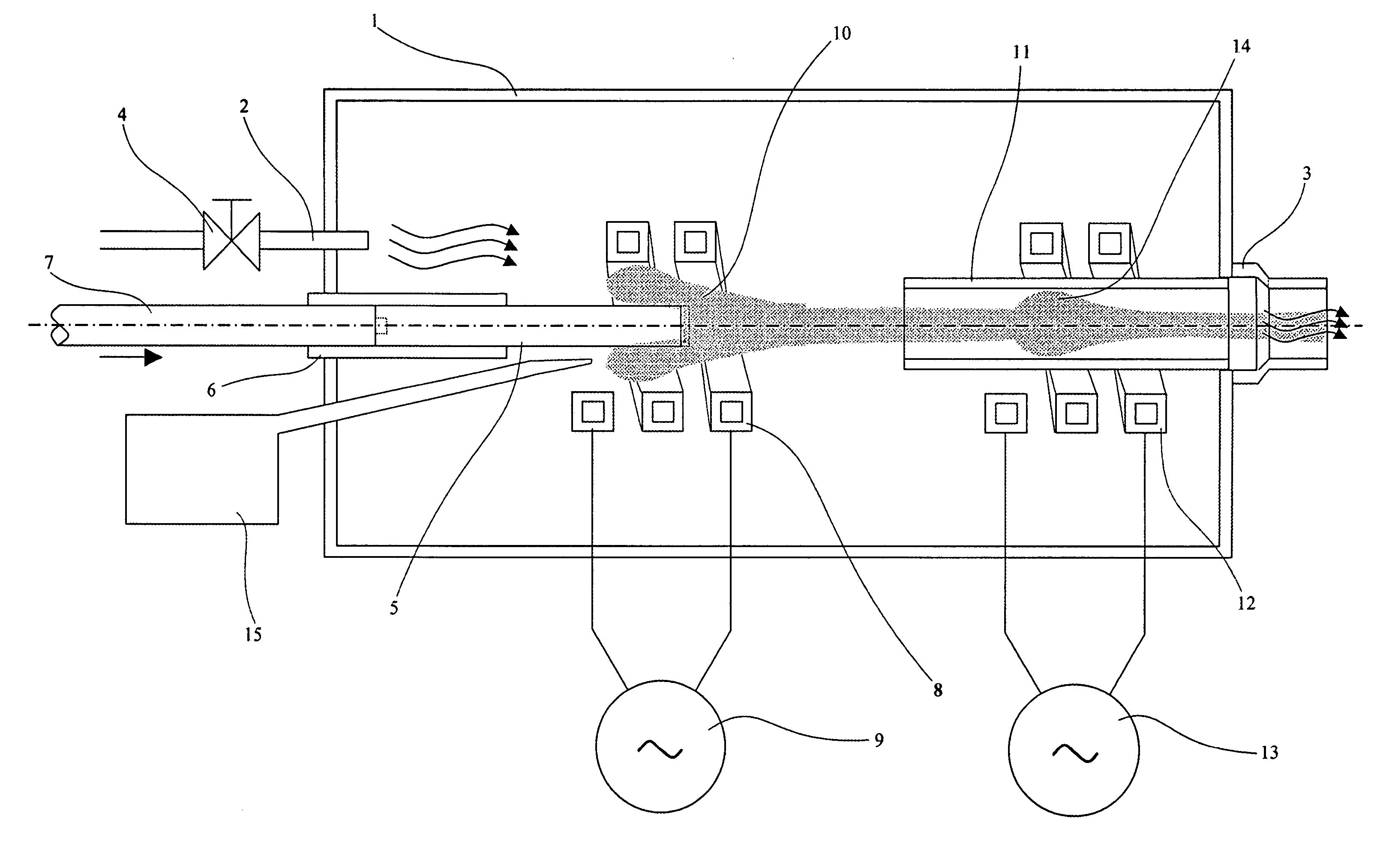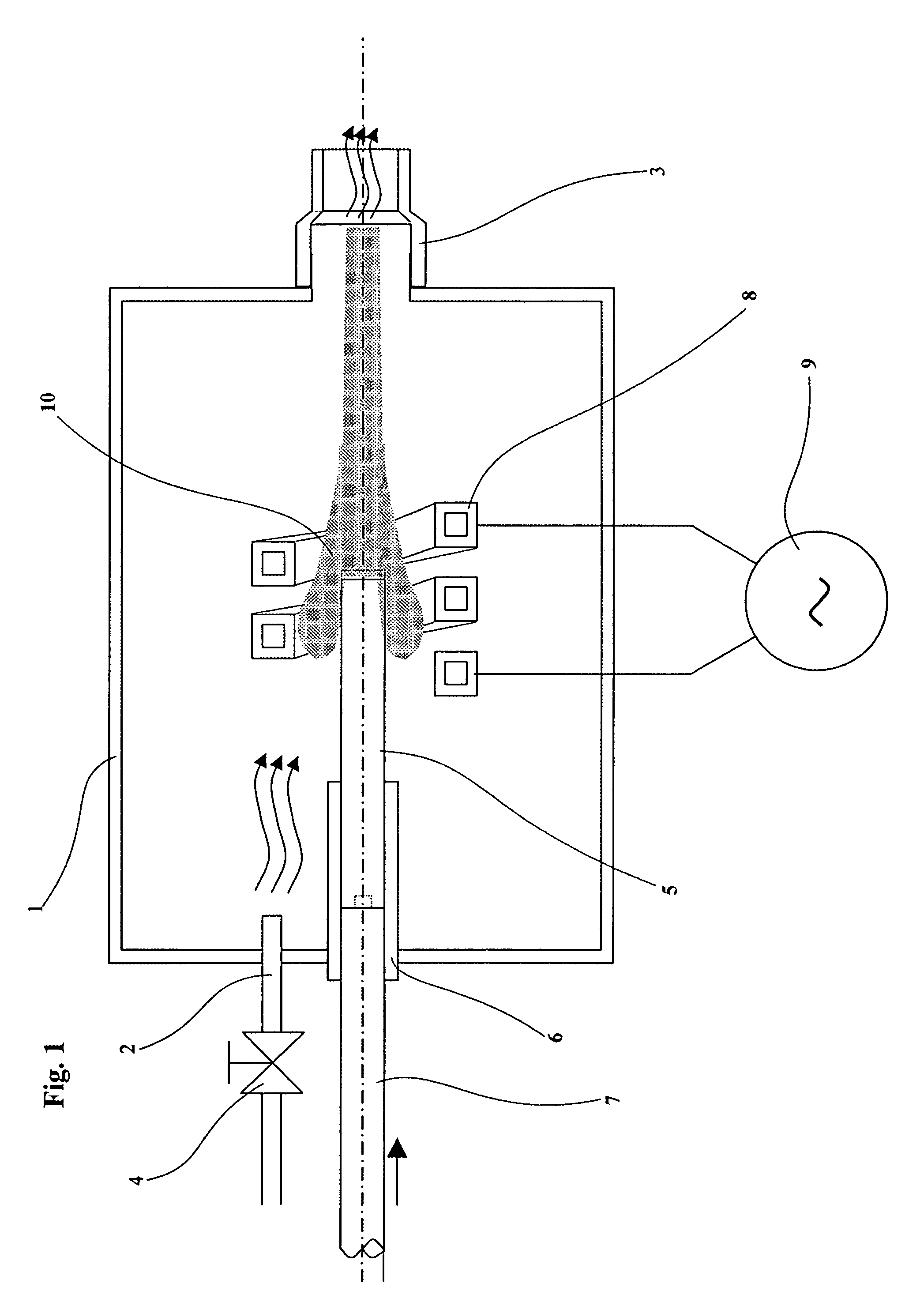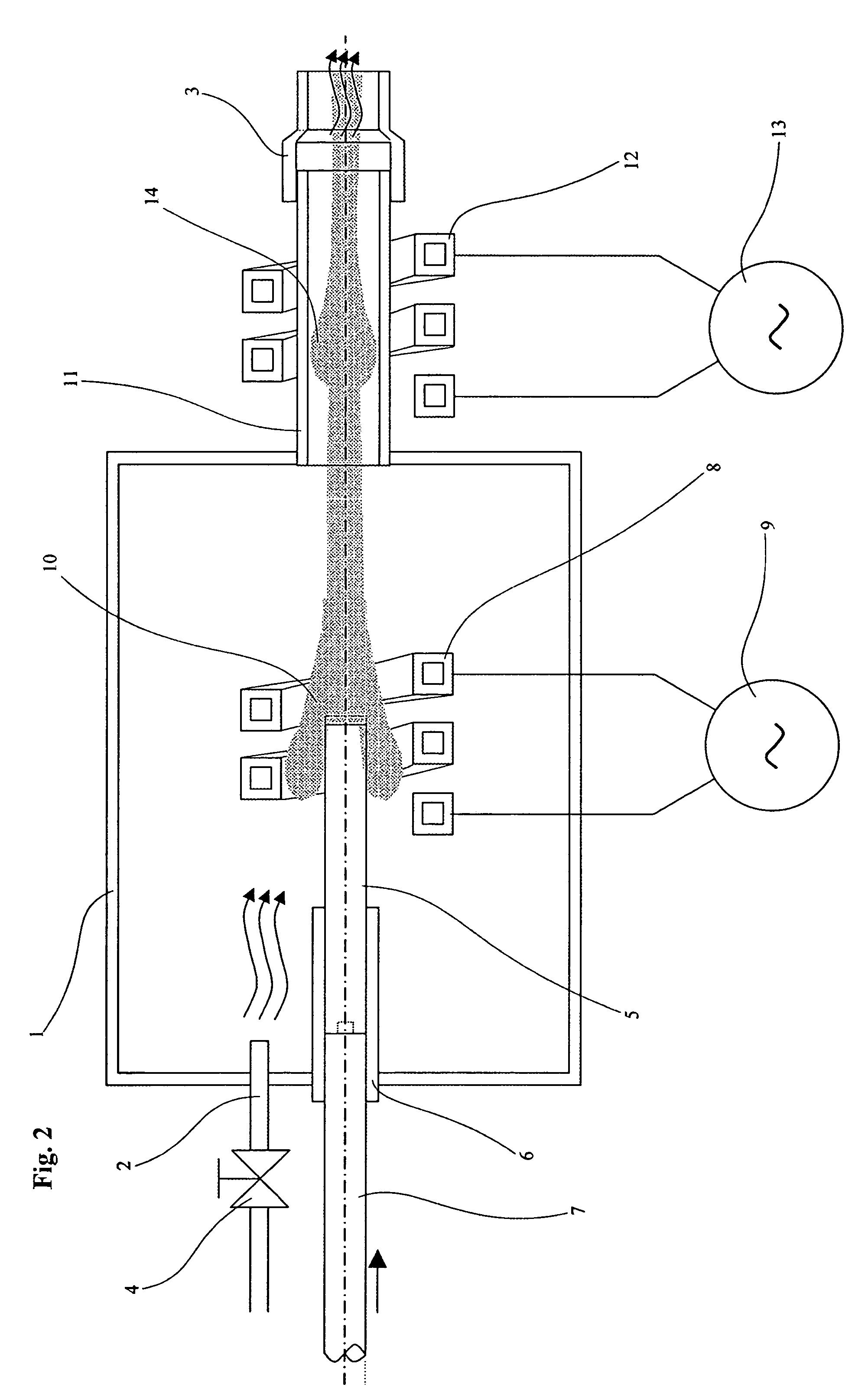Device and method for production of carbon nanotubes, fullerene and their derivatives
a technology of carbon nanotubes and fullerene, which is applied in the field of devices and methods for producing carbon nanotubes, fullerene and their derivatives, can solve the problems of reducing the time of permanence of carbon clusters in high temperature plasma, affecting the research of other new applications, and affecting the development of new applications. , to achieve the effect of eliminating any trace of atmospheric gases
- Summary
- Abstract
- Description
- Claims
- Application Information
AI Technical Summary
Benefits of technology
Problems solved by technology
Method used
Image
Examples
example 1
[0095]Fullerene and multi wall nanotubes were produced using the device showed in FIG. 1. As precursory material were utilized stacked up graphite rods with a purity grade not less than 99.9% and with a diameter of 6 mm.
[0096]The graphite rods were vacuum-tight inserted through a bush inside a inox steel vacuum chamber until that the head of the first rod inserted arrived near the first inductor.
[0097]After that the vacuum was made inside the chamber (vacuum limit reached 1 Pascal) inert gas argon was admitted until to arrive at a fixed pressure value inside the chamber of 50.000 Pascal with an inert gas flow of 20 l / min.
[0098]For the graphite rod continuous vaporization it was utilized the electromagnetic field generated from an inductor with length 27 mm, internal diameter 16 mm, with 4 insulated coils made of electrolytic copper tube (tube side of 6 mm and thickness of 1 mm, cooling inside by demineralized water).
[0099]This inductor was supplied from a high frequency generator, e...
example 2
[0104]Single wall nanotubes were made using the device showed in FIG. 2 where a second inductive plasma was generated with a second inductor. The process realized in this second example was absolutely the same described in the example 1 with the only following exceptions: i) it was utilized a second inductor, made of electrolytic round copper pipe, external diameter of 10 mm and thickness of 1 mm, cooled inside by demineralized water; this second inductor was long 50 mm, made with 3 coils with internal diameter 50 mm supplied from a high frequency generator working at about 10.5 MHz; the inductor was placed coaxially to a silicon nitride tube with an external diameter of 40 mm and a thickness of 4 mm cooled by distilled water;
[0105]ii) graphite rods as those utilized in the example 1 were used but in this case the graphite rods were drilled along the axis and the holes filled with a mixture of catalysts and graphite powder subsequently compacted.
[0106]Catalysts metals used were coba...
example 3
[0109]Fullerene derivatives and fullerene were produced using the device showed in FIG. 1 with the same parameters described in the example 1. In this case the only difference respect to the example 1 was the precursory material used.
[0110]As precursory material were used graphite rods with purity grade not less than 99.9% with a diameter of 6 mm, previously submerged in distilled water for a period of 24 hours.
PUM
| Property | Measurement | Unit |
|---|---|---|
| power | aaaaa | aaaaa |
| frequency | aaaaa | aaaaa |
| temperatures | aaaaa | aaaaa |
Abstract
Description
Claims
Application Information
 Login to View More
Login to View More - R&D
- Intellectual Property
- Life Sciences
- Materials
- Tech Scout
- Unparalleled Data Quality
- Higher Quality Content
- 60% Fewer Hallucinations
Browse by: Latest US Patents, China's latest patents, Technical Efficacy Thesaurus, Application Domain, Technology Topic, Popular Technical Reports.
© 2025 PatSnap. All rights reserved.Legal|Privacy policy|Modern Slavery Act Transparency Statement|Sitemap|About US| Contact US: help@patsnap.com



